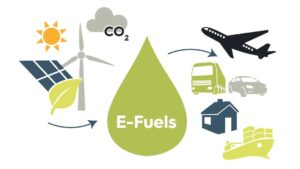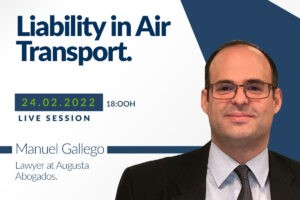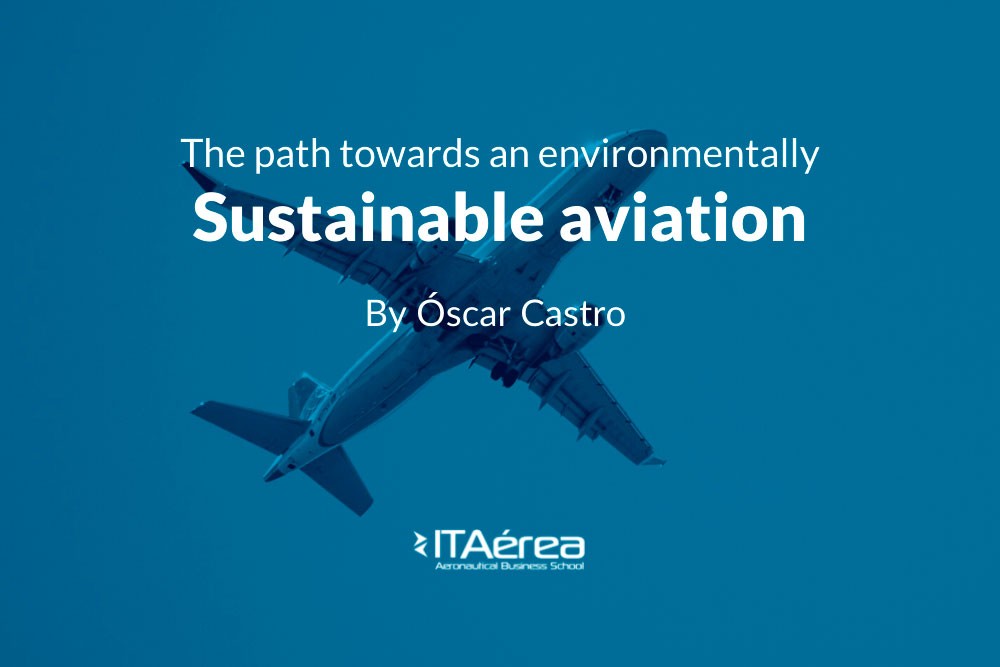
The path towards an environmentally sustainable aviation
News
By Óscar Castro
Teacher of ITAérea
Aviation and its impact on the environment, mainly regarding global warming, has been at the centre of the public interest during the last years. The legitimate concerns about the looming climate crisis, combined with the urgency to take mitigation actions, paved the way to jump into some quick conclusions, not always back by the facts. In this brief article the environmental role of commercial airplanes is analized. The aim is to look at the critical issue of aviation greenhouse emissions in a global context.
From that understanding, a quick review of the most promising strategies and technologies to reduce emissions in air transport will be presented. The final goal, as committed by the aviation industry, is to achieve net-zero carbon emissions by 2050, aligning this hard-to-decarbonize sector with the EU ambitious overall objective. The analysis and facts presented in this article are extracted from the comprehensive report “The path of aviation industry towards environmental sustainability” from the COIAE.
Finally, it is worthwhile remembering than sustainability also covers the important social and economical aspects, well beyond the scope of this article. Local pollution and noise around airports, long-term concerns for aviation and target of constant improvements, are not discussed here either.
Índice
Aviation Greenhouse Emissions
Commercial aviation is responsible for around 2,4% of all the anthropogenic CO2 emitted globally. This is similar to the carbon released from shipping and many times less than the road transport. When non-CO2 emissions are taken into account, contrails and NOx primarily, aviation total contribution to global warming increases to 3.5% of all human activities.
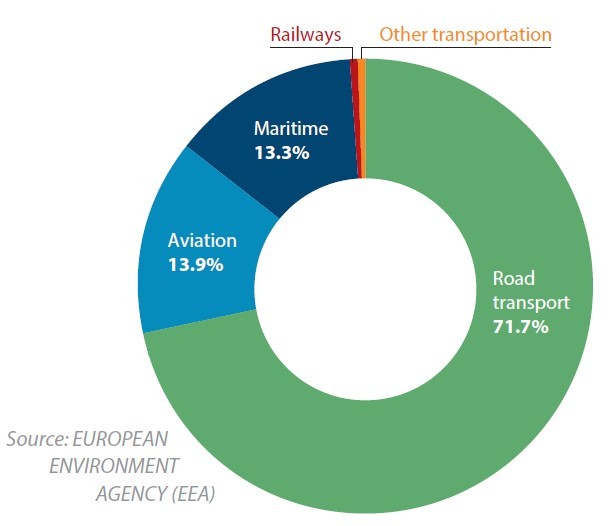
Figure 1. Transport greenhouse emissions from 2016 in Europe (From EEA)
These figures, no doubt, are relevant and demand action, but also give context to the aviation environmental impact among other means of transport, and the overall picture of global warming contributions. Generally, the main concern on aviation emissions are not as much its current volume, but its growing trend due to the sustained expansion of commercial flights. In this aspect, it is relevant to highlight the pledge made by the aircraft industry back in 2008 to reach carbon-neutral growth from 2020. The COVID19 pandemic largely stalled commercial flights and changed all air-traffic predictions, although the commitment to reduce emissions not only remains but expanded to the challenging net-zero goal in 2050.
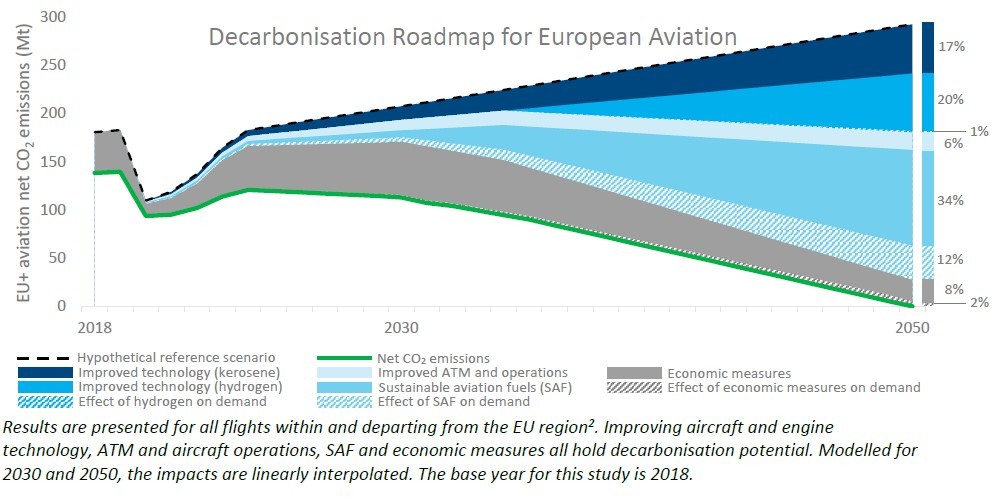
Figure 2. Mix of strategies suggested for the decarbonisation of European aviation (From Destination 2050. NLR 2021)
Strategies and technologies
The pathway towards environmentally sustainable flights is being built combining different approaches to mitigate first, and finally eliminate polluting emissions. This toolbox includes increasing efficiencies both in aircrafts and air-traffic management, carbon offset schemes, sustainable fuels, as well as disruptive technologies with promising steps in electric and hydrogen aviation. Here, there is a quick review of the ongoing efforts on these strategies and technologies.
In the last four decades, commercial aircrafts improved their energy efficiency above 60%. Today, a state-of-the-art aircraft consumes on average less than 3 litres of fuel per 100 passenger-km. This value, and therefore the associated CO2 emissions, is similar to the performance of an efficient compact car. The continuous technological development, covering propulsion systems, new materials and aerodynamic innovations, allows to design increasingly less polluting aircraft.
Improvement of infrastructures and control systems, both in flight and at the airports, also allows for a more efficient coordination and management of air traffic, and the corresponding reduction of emissions and noise. In Europe, a key development will come with direct flights thanks to the introduction of the Single European Sky.
Carbon offset schemes, implemented in different forms, are part of the mitigation effort to compensate aviation emissions. One of the most ambitious examples is the European Emissions Trading System (EU ETS), which already certified the reduction of 193 million tons of carbon dioxide emissions related to air traffic between 2013 and 2020. At global level, the introduction of CORSIA, a regulatory framework to compensate CO2 emissions from international flights, is already in operation, although it needs serious reforms if it is to make an impact on emissions.
One of the most effective ways to reduce carbon emissions during flight is the use of sustainable aviation fuels (SAF). Either from biological or synthetic renewable sources, it is already a reality and it will increase its share in fuel consumption supported by mandates as RefuelEU, a proposal from the European Commission. SAF are a key tool for several reasons: they can be used in existing aircraft, it is possibly the only realistic solution for decarbonizing long-range flights, and they can even mitigate the impact of contrails. To make this environmental gains true, it is of paramount importance to certify all its lifecycle while scaling up SAF production.
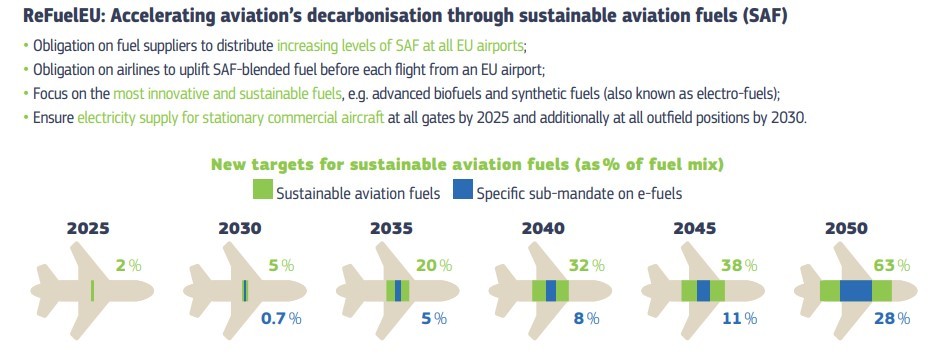
Figure 3. European Commission SAF mandate proposal (From EC Transport Factsheet)
Electric aviation, with its promise of zero-emission flights, is right around the corner with many commercial projects already launched. Although still aimed at small aircraft and short-range operations, electric engines allow for diverse and flexible configurations, with power from renewable sources delivered by batteries or fuel cells. The main technological obstacles to overcome are the low specific energy of batteries and the design of high-power electric systems, areas in which progress is being made very quickly.
Finally, the introduction of hydrogen in aviation as a sustainable energy vector is one of the most promising ways to drastically reduce emissions through several applications. It plays a key role in the production of synthetic sustainable fuels, it can power electric propulsion via fuel cells, and it can also be burned directly in turbojets with no CO2 being released. There are still many technical and logistic hurdles to be solved, including the industrial production of green hydrogen, but companies like Airbus are set to introduce hydrogen-powered airlines in the next decade.
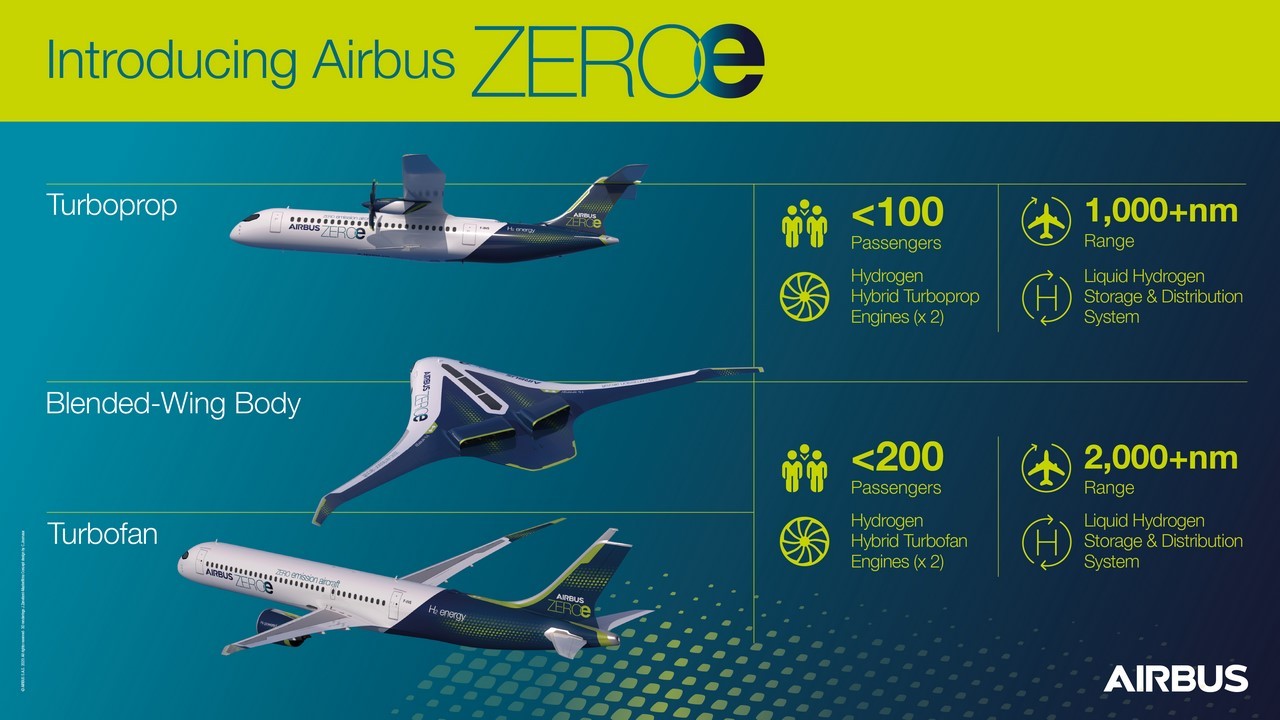
Figure 4. Hydrogen-powered ZEROe program (From Airbus)
Conclusions
Achieving an environmentally friendly commercial aviation is an ambitious goal but, despite some views, it is within our reach. Undoubtedly, it will require the involvement and effort of the entire aeronautical industry, as well as the support of governments, international organizations and the passengers themselves. There is a wide range of actions, strategies and technologies to make it happen, and the most likely path is a combination of all of them according to their optimal capabilities and different timeframes.
As an example, in a horizon of 10 to 20 years, it would be feasible to achieve regional and short-range commercial air transport mainly based on electric and hybrid propulsion, with hydrogen combustion engines powering mid-range and high-capacity routes, and long-haul flights relying on sustainable fuels. This sustainable future for aviation is necessary, it is possible and it is in our hands to make it a reality.
CONTACT info@itaerea.com +34 968 966 885 TEACHERS TRAINING



